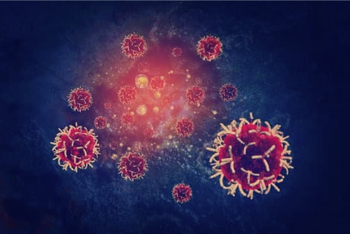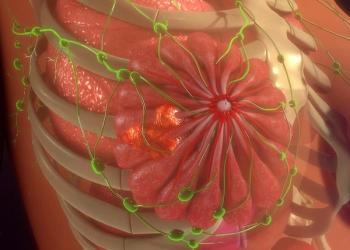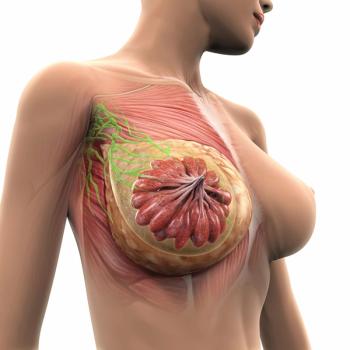
Oncology NEWS International
- Oncology NEWS International Vol 9 No 2
- Volume 9
- Issue 2
Intensive Sequential Adjuvant Chemo for High-Risk Breast Cancer Patients
HANNOVER, Germany-An intensive sequential adjuvant chemotherapy regimen has proven safe and tolerable in breast cancer patients with 10 or more positive lymph nodes. The regimen, consisting of epirubicin
HANNOVER, GermanyAn intensive sequential adjuvant chemotherapy regimen has proven safe and tolerable in breast cancer patients with 10 or more positive lymph nodes. The regimen, consisting of epirubicin
(Ellence), paclitaxel (Taxol), and cyclophosphamide, has been associated with four recurrences in the first 36 patients treated and followed for a median of 75 weeks.
The results follow evidence of improved survival with the regimen in patients who have had up to nine positive nodes, Ursula Scholz, MD, of Hannover Medical School, Germany, said at the San Antonio symposium. It is still too early to judge the efficacy of this regimen, Dr. Scholz said. We need to evaluate the regimen for a longer period of time and in a larger number of patients. We also have not determined the optimal regimen.
Dr. Scholz and her colleagues have evaluated 36 patients treated with two different dosages of the combination, which is repeated three times every 2 weeks with growth factor support on days 3 to 12. Fifteen patients received epirubicin 120 mg/m², paclitaxel 200 mg/m², and cyclophosphamide 2,000 mg/m². The remaining 21 patients received epirubicin 150 mg/m², paclitaxel 250 mg/m², and cyclophosphamide 2,500 mg/m².
Pretreatment in all cases consisted of dexamethasone, clemastine, and ranitidine prior to paclitaxel, and dexamethasone and ondansetron (Zofran) prior to epirubicin and cyclophosphamide.
Patient Characteristics
The median age of the 36 patients was 48. They had a median of 22 lymph nodes evaluated and a median of 13 positive nodes. Investigators excluded patients who had a history of significant cardiac disease, metastatic breast cancer, or psychiatric disorders.
Thus far, four patients have had disease recurrences. One patient developed lung and bone metastases and died a year after treatment with the sequential therapy. A second patient developed meningiosis carcinomatosa and died a year after treatment.
One patient developed a liver metastasis 6 months after therapy and has been maintained for more than a year without further progression. The fourth patient had a locoregional recurrence with nodal involvement and has remained alive more than 18 months after recurrence.
Grade 3-4 hematologic toxicity consisted of leukopenia in 10 patients, thrombocytopenia in five patients, and anemia in four patients. No grade 3-4 nonhematologic toxicity occurred in any patient. Grade 1-2 alopecia, nausea-vomiting, and peripheral neuropathy occurred in all 36 patients. No patient discontinued therapy because of toxicity.
Articles in this issue
almost 26 years ago
Neoadjuvant Docetaxel Increases Response Rate in Large Breast Tumorsalmost 26 years ago
Faslodex, a Pure Antiestrogen, Shows Antitumor Activityalmost 26 years ago
Consider Node Dissection, Adjuvant Therapy in Elderly Breast Cancer Patientsalmost 26 years ago
Tumor-Associated Proteases Predict Outcome in Node-Negative Patientsalmost 26 years ago
Herceptin Plus Vinorelbine a Promising Combination in Advanced Breast Canceralmost 26 years ago
Small Risk of Breast Cancer Death After Invasive Recurrence in DCIS Patientsalmost 26 years ago
Paclitaxel/Herceptin Effective in Metastatic Breast Canceralmost 26 years ago
Conservative Surgery Alone Not Sufficient to Prevent RecurrenceNewsletter
Stay up to date on recent advances in the multidisciplinary approach to cancer.



















































































